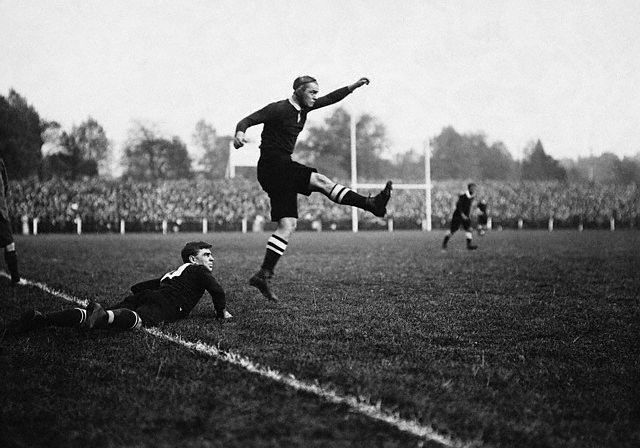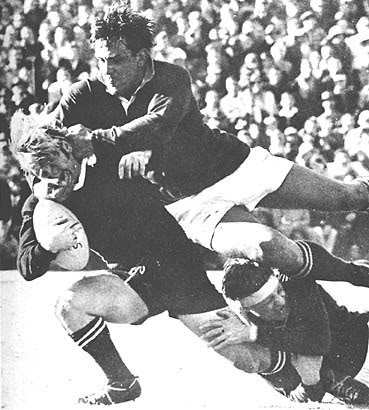When 6’5″ and 250lb All Black winger Jonah Lomu broke on the scene back in the mid-1990s, it seemed everyone scrambled to find their own massive winger … Dean Hall for South Africa, a young Pierre Spies was a schoolboy wing until being moved to 8 (which was a reversal of Lomu’s experience), Steve Hanley for England, Big Del and Tuqiri came across from League in Australia … the list goes on …
I’ve been pleased to see that rugby is still a game for all shapes and sizes over the past few weeks as France ran and passed their way to a Six Nations Grand Slam (i.e. defeated all challengers from the UK, Ireland and Italy) with a finely balanced team. After Aurelien Rougerie injured himself in the match against Scotland, we got to see living proof that there is still room for the little man in rugby with coach Marc Lievremont’s faith in his wingers. Standing at just 5’9″ and an un-heard of in the modern era 5’5″ respectively, Alexis Palisson and Marc Andreu proved that so long as you can play defence and be a threat in attack, it doesn’t matter how big you are.

I hate to have to resort to using Canterbury/Crusaders as an example, but look at the ‘massive hulks’ that made up their recent assortment of backs: Ellis, Carter, Crotty, Bateman, Slade, Brett, Fotuali’i, Guildford, Payne, Poki. All but a couple are under 6′ and none are over 200lbs – a vast difference from the bulking back lines we saw in the late 90s and early 00s. And I don’t have to elaborate on how devastating these guys are with ball in hand and even a tiny bit of space in front of them. Even a supposed heir to Lomu’s legacy, Ma’a Nonu, has been made to become smaller, fitter, and more agile than when he first broke on the scene. If anything, I think the trend is slowly moving toward smaller backs. (If only I could navigate the All Blacks video site for the clip of their strength and fitness coach talking about the detriment of carrying too much unnecessary weight, commenting on the need for certain players to drop 15kgs of post season weight.)
Critics, like former Irish international Tony Ward, believe that with players getting bigger rugby needs to adopt League’s lesson and remove two players from the field to open up space. Rather than suggesting dropping players, I think the onus is on the entire rugby community to continue focusing on developing excellence in basic skills and game awareness to make this space available or create it. There are plenty of teams which show this … again, I have to cite the French and Crusaders/Canterbury (and will go wash myself clean in a minute) … that you don’t need to have teams full of massive blokes to be successful, and that by simply ‘playing rugby’ as it was meant to be played can still allow you to win the day.
Critics could argue tiny Christoph Dominici’s lesson in wing play delivered to Lomu in the epic 1999 World Cup upset as a one-off, but I knew the era was coming to close when the Canuck cheat sheet answer to Lomu, the 6’6″ Justin Mensah-Coker, was taken to school in a Churchill Cup match by comparatively smaller James Simpson-Daniel and Richard Haughton. If you want more proof, look at the day the day James Simpson-Daniel also proved that big wingers just don’t have the lateral movement to match a speedy little guy?

As have continued to say over recent years: If you’re good enough, you’re ‘big’ enough.








